Top 10 national parks in India
- Jim Corbett National Park (Uttarakhand)
- Kaziranga National Park (Assam)
- Ranthambore National Park (Rajasthan)
- Kanha National Park (Madhya Pradesh)
- Sunderbans National Park (West Bengal)
- Bandhavgarh National Park (Madhya Pradesh)
- Periyar National Park (Kerala)
- Gir Forest National Park (Gujarat)
- Tadoba Andhari Tiger Reserve (Maharashtra)
- Pench National Park (Madhya Pradesh and Maharashtra)
1. Jim Corbett National Park (Uttarakhand):
Jim Corbett National Park, located in Uttarakhand, India, holds significant historical importance. Established in 1936, it was initially named Hailey National Park after Sir Malcolm Hailey, the Governor of the United Provinces. Later, in 1956, the park was renamed Jim Corbett National Park in honor of Jim Corbett, a British-Indian hunter, conservationist, and author.
The national park itself encompasses an area of approximately 520 square kilometers (200 square miles) and spans parts of the Nainital, Almora, and Pauri Garhwal districts of Uttarakhand. It is situated in the foothills of the Himalayas and encompasses diverse habitats, including dense forests, grasslands, and riverine belts.
Jim Corbett National Park is renowned for its thriving population of Bengal tigers, making it one of the premier tiger reserves in India. It is also home to various other wildlife species, including elephants, leopards, deer, sloth bears, and numerous bird species.
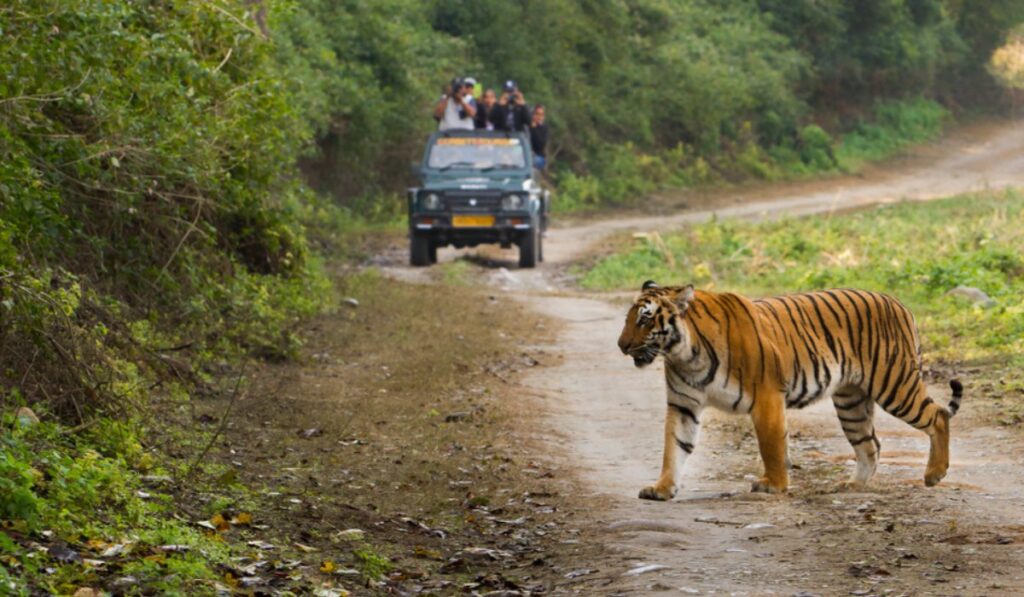
2. Kaziranga National Park (Assam):
Kaziranga National Park, located in the Indian state of Assam, has a compelling history and is recognized as a UNESCO World Heritage Site. The park was established in 1905 as a response to concerns about the dwindling population of Indian rhinoceroses in the region. It was initially named Kaziranga Proposed Reserve Forest and was granted national park status in 1974.
Today, Kaziranga National Park boasts the highest density of Indian rhinoceroses in the world, making it a critical sanctuary for their survival. The park also supports other significant wildlife, including wild elephants, tigers, water buffaloes, deer species, and a plethora of bird species, including the globally threatened Bengal florican and great Indian hornbill.
Spanning an area of approximately 430 square kilometers (166 square miles), Kaziranga National Park encompasses vast stretches of grasslands, wetlands, and dense forests. It is bisected by the Brahmaputra River and is characterized by its unique and diverse ecosystem.
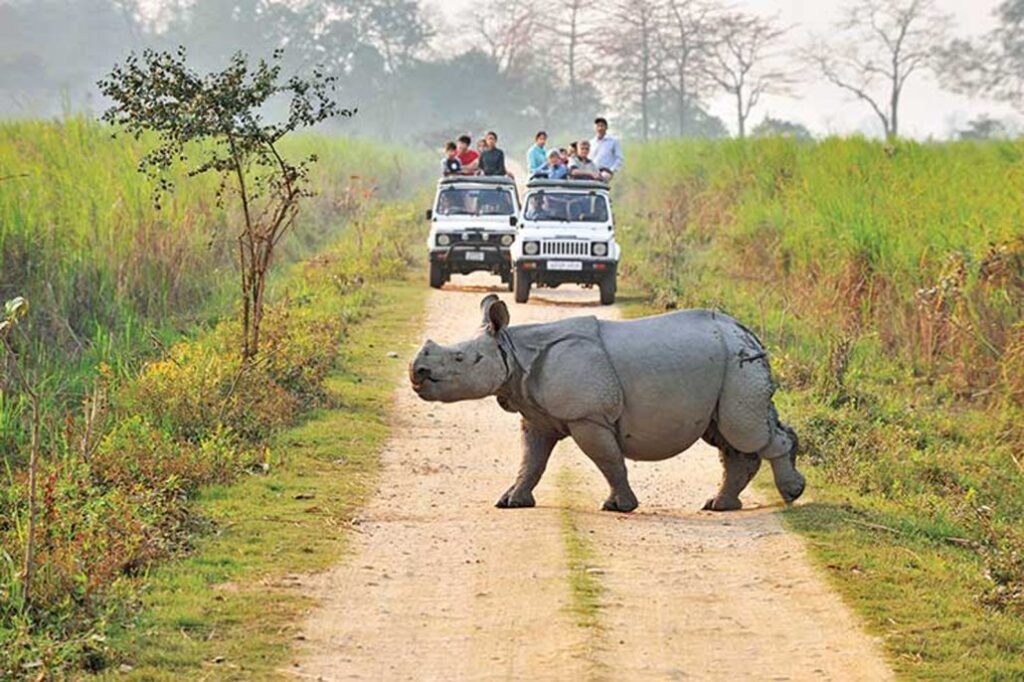
3. Ranthambore National Park (Rajasthan):
The history of Ranthambore dates back to the 10th century when the Chauhan dynasty rulers constructed the formidable Ranthambore Fort. The fort played a significant role in the region’s history, witnessing the rise and fall of various dynasties over the centuries.
In 1973, Ranthambore was declared a wildlife sanctuary, and in 1980, it achieved the status of a national park. It was included as one of the initial tiger reserves in India under the Project Tiger initiative, which aimed to protect and conserve the endangered Bengal tigers.
Spanning an area of approximately 392 square kilometers (151 square miles), Ranthambore National Park showcases a diverse landscape comprising dry deciduous forests, rocky hills, meandering rivers, and serene lakes. The park’s varied topography provides a perfect habitat for a wide array of wildlife species.
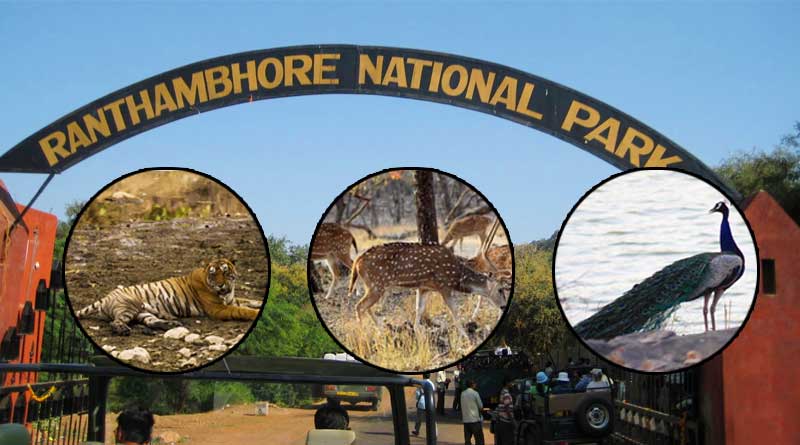
4. Kanha National Park (Madhya Pradesh):
In the early 1930s, the region that now encompasses Kanha National Park was a hunting ground for the British and Indian aristocracy. However, the declining population of tigers and other wildlife prompted conservationists to recognize the need for protection and conservation.
Kanha’s conservation journey began when the region caught the attention of renowned conservationist and author, Rudyard Kipling. The park is said to have inspired his classic novel, “The Jungle Book,” which showcased the beauty and grandeur of the Indian wilderness.
In 1955, Kanha was declared a wildlife sanctuary, and in 1974, it was designated as a national park. It played a pivotal role in the establishment of Project Tiger, an initiative aimed at conserving the endangered Bengal tiger.
Encompassing an area of approximately 940 square kilometers (363 square miles), Kanha National Park features a diverse landscape comprising dense forests, meadows, grasslands, and streams. The park is known for its unique Sal tree forests, which provide a habitat for a wide range of wildlife.
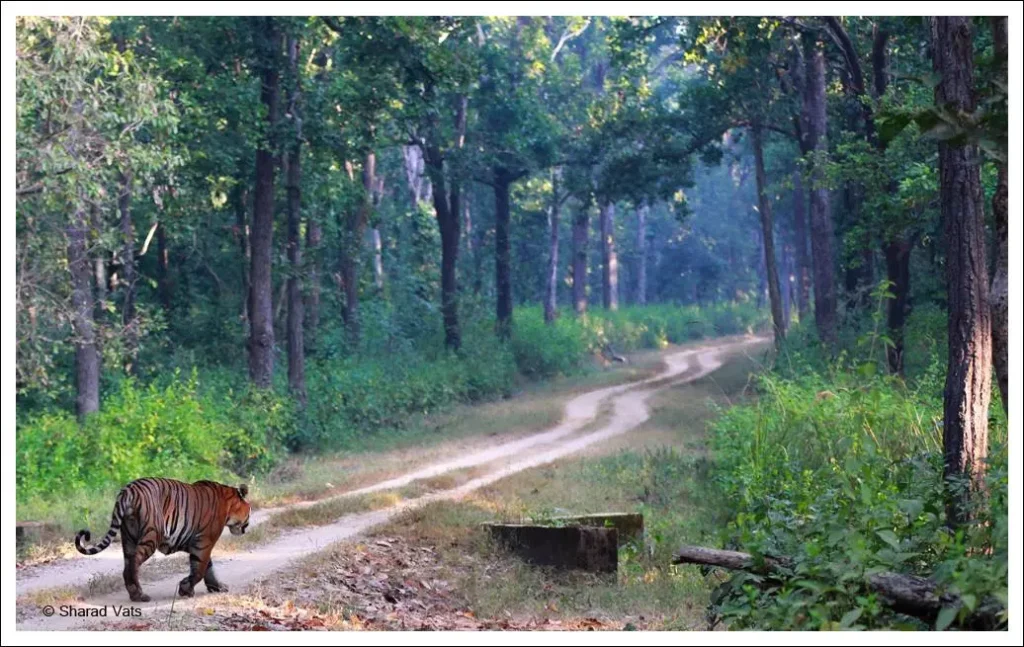
5. Sunderbans National Park (West Bengal):
The Sundarbans is a vast mangrove forest that spans across parts of India and Bangladesh. The name “Sundarbans” translates to “beautiful forest” in the Bengali language. The area has a rich history dating back to ancient times, with evidence of human settlements and cultural influences.
During the medieval period, the Sundarbans came under the rule of various kingdoms and witnessed a blend of indigenous cultures, including those of the local Munda and Sabar tribes. The region also played a significant role in maritime trade, with merchants from different parts of the world visiting its ports.
In 1973, Sundarbans was designated as a wildlife sanctuary, and in 1984, it was declared a national park. The Sundarbans region is unique as it is the largest tidal halophytic mangrove forest in the world, serving as a critical ecosystem and providing a habitat for numerous species.
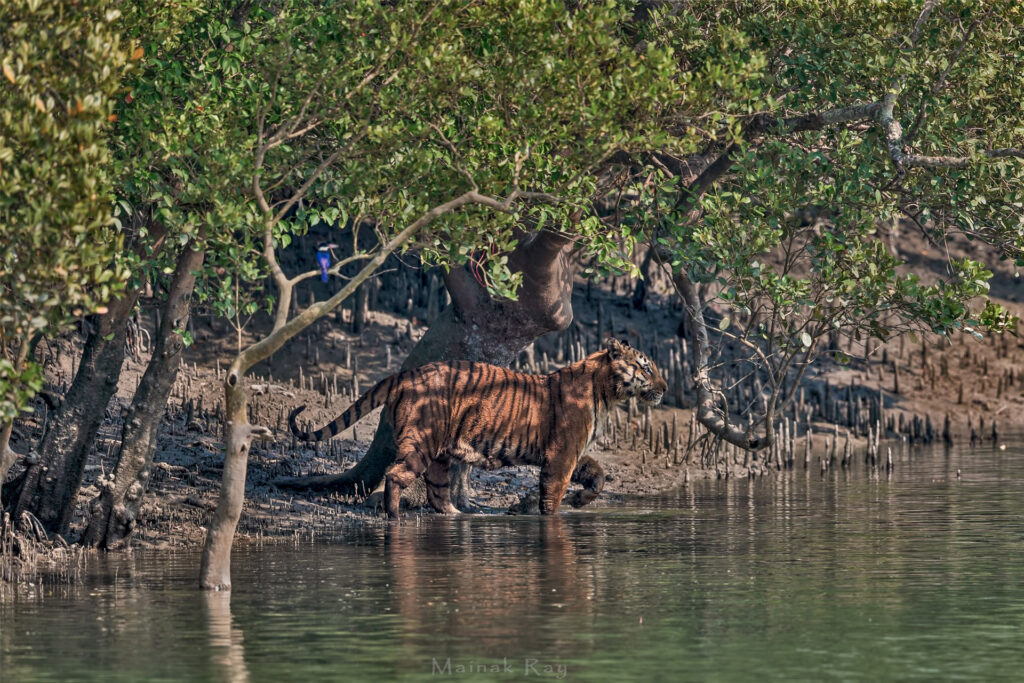
6. Bandhavgarh National Park (Madhya Pradesh):
Bandhavgarh National Park, located in Madhya Pradesh, India, has a rich history intertwined with legends and is renowned for its thriving tiger population. The park’s history dates back to ancient times and is steeped in mythology and cultural significance.
According to Hindus, it is believed that Lord Rama, a revered deity, spent time in the forests of Bandhavgarh during his exile. The name “Bandhavgarh” translates to “Brother’s Fort” in Hindi, referring to the story of Lord Rama’s brother, Lakshmana, who is believed to have built a fort on the hill within the park.
Bandhavgarh Fort, perched atop the hill, is a prominent landmark within the national park. The fort has a fascinating history, with references dating back to the 1st century. It has witnessed the rise and fall of various dynasties, including the Baghels and the Kalchuris.
Covering an area of approximately 450 square kilometers (174 square miles), Bandhavgarh National Park features a diverse landscape comprising dense forests, grasslands, and rocky hills. Its varied topography provides a conducive habitat for a wide range of wildlife species.
Apart from tigers, Bandhavgarh is home to a host of other fascinating wildlife, including leopards, sloth bears, Indian bison (gaur), sambar deer, spotted deer (chital), and various bird species. The park also showcases a rich floral diversity with its lush vegetation and endemic plant species.
Visitors to Bandhavgarh National Park can embark on thrilling wildlife safaris in open-top Jeeps accompanied by experienced naturalists. These safaris offer an opportunity to explore the park’s enchanting forests, spot wildlife in their natural habitat, and appreciate the awe-inspiring beauty of the surroundings.
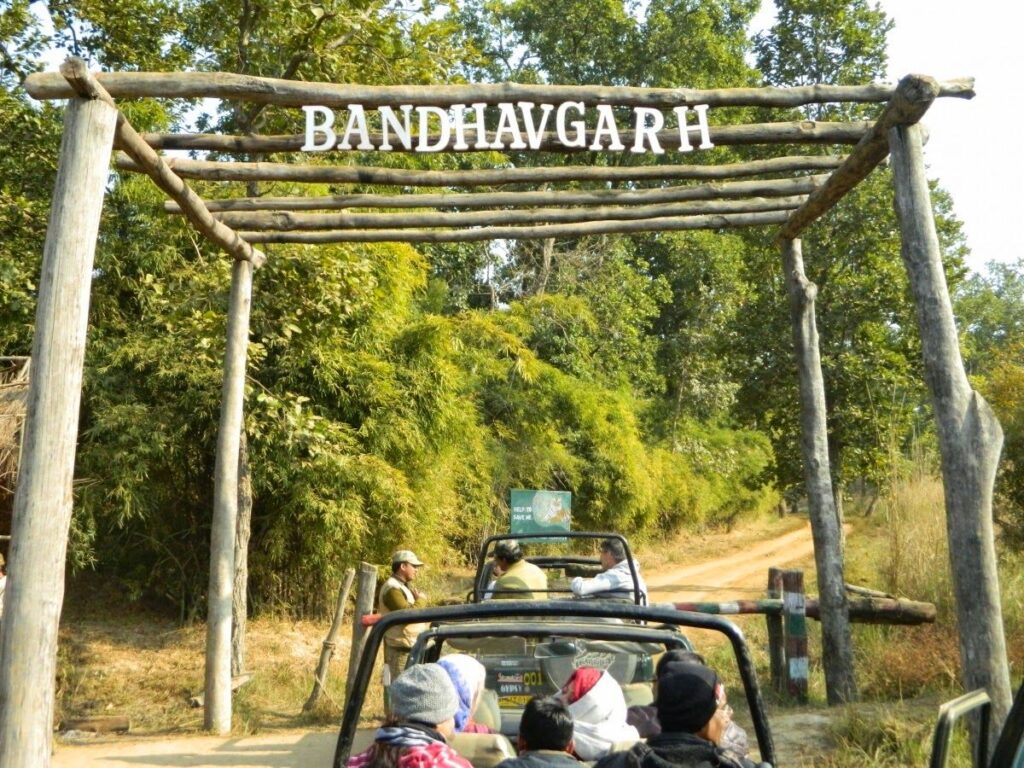
7. Periyar National Park (Kerala):
Periyar National Park is set in the picturesque Western Ghats, a mountain range recognized as a UNESCO World Heritage Site. The park was established in 1982 and is spread over an area of approximately 925 square kilometers (357 square miles).
The history of Periyar National Park is closely connected to the people living in the region. The local community, especially the indigenous tribes, played a crucial role in the conservation of the area. Their harmonious coexistence with nature led to the establishment of the park to protect the rich biodiversity and ecosystems.
The park is centered around the Periyar Lake, a large reservoir formed by the Mullaperiyar Dam. The lake and its surrounding forests provide a unique habitat for a wide range of wildlife, making it one of the most biodiverse regions in Kerala.
Periyar National Park is renowned for its population of wild elephants. These majestic creatures freely roam the park, and boat safaris on the Periyar Lake offer an excellent opportunity to witness their natural behavior. Apart from elephants, the park is home to tigers, leopards, Indian bison (gaur), sambar deer, Nilgiri langurs, and a variety of bird species.
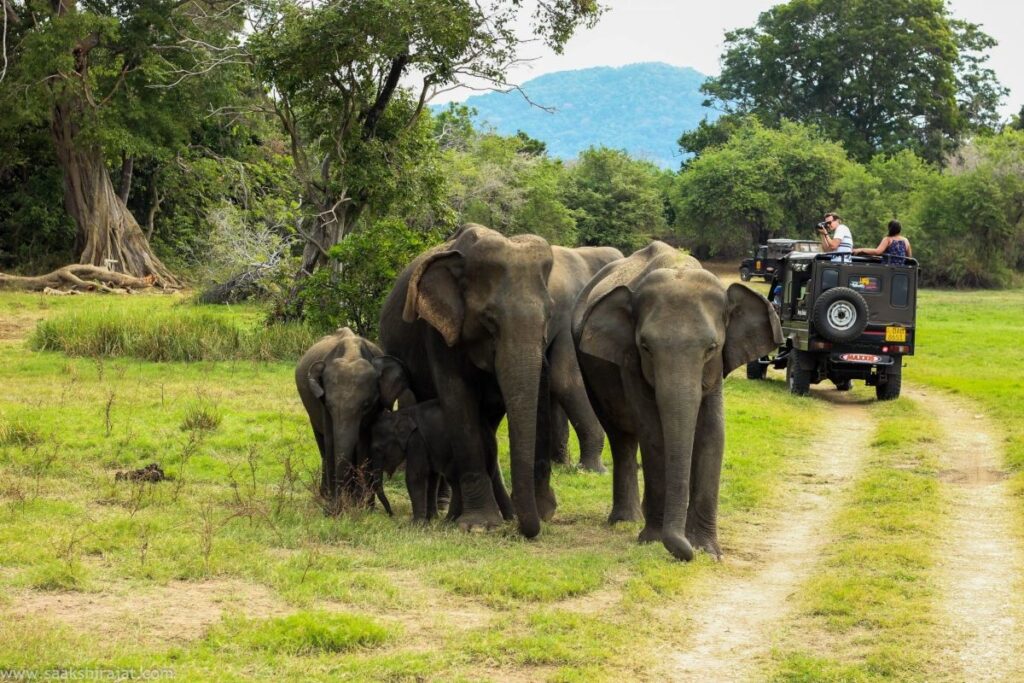
8. Gir Forest National Park (Gujarat):
Gir Forest National Park was established in 1965, primarily to protect the dwindling population of Asiatic lions. At the turn of the 20th century, excessive hunting and habitat loss had pushed the Asiatic lion to the brink of extinction, with only a handful of individuals remaining in the wild.
Today, Gir Forest National Park spans over 1,400 square kilometers (540 square miles) and comprises diverse ecosystems, including dry deciduous forests, grasslands, and rocky hills. This varied terrain provides a suitable habitat for a wide range of wildlife.
The park is best known for its population of Asiatic lions, which have made a remarkable recovery since the brink of extinction. Gir Forest is the only place in the world where these magnificent creatures are found in the wild. Witnessing the majestic lions in their natural habitat is a truly awe-inspiring experience.
Apart from lions, Gir Forest is also home to other wildlife species, including leopards, hyenas, jackals, Indian bison (gaur), sambar deer, spotted deer (chital), and numerous bird species. The Kamleshwar Dam within the park serves as a vital water source and attracts a variety of birdlife.

9. Tadoba Andhari Tiger Reserve (Maharashtra):
Tadoba Andhari Tiger Reserve was established in 1955 as a protected area to safeguard the dwindling tiger population in the region. Named after the Tadoba Lake and the Andhari River that flow through the reserve, it covers an expansive area of approximately 1,727 square kilometers (667 square miles).
The history of Tadoba Andhari Tiger Reserve is deeply rooted in the cultural heritage of the local communities. The region is home to the Gond tribal people, who have lived in harmony with nature for centuries and have played a crucial role in the conservation efforts of the reserve.
Tadoba Andhari Tiger Reserve is known for its impressive tiger population. It has been recognized as one of the finest tiger habitats in India, offering a chance to witness these majestic creatures in their natural habitat. Apart from tigers, the reserve is home to leopards, Indian bison (gaur), sambar deer, spotted deer (chital), sloth bears, and various species of birds.
The reserve also boasts a rich avian diversity, with over 190 bird species recorded within its boundaries. Birdwatching enthusiasts can spot migratory birds, waterbirds, raptors, and a host of other feathered species.
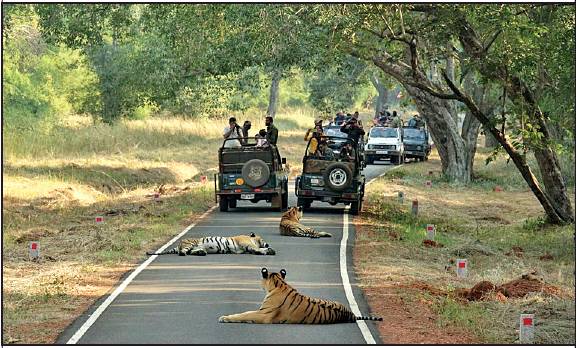
10. Pench National Park (Madhya Pradesh and Maharashtra):
Pench National Park, located in both Madhya Pradesh and Maharashtra states of India, has a rich history and is renowned for its natural beauty and diverse wildlife. The park’s history is closely linked to its geographical significance and the efforts to protect its unique ecosystems.
Pench National Park, named after the Pench River that flows through its boundaries, was established as a wildlife sanctuary in 1975 and later designated as a national park in 1983. The park spans an area of approximately 758 square kilometers (293 square miles) and encompasses both Madhya Pradesh and Maharashtra.
The history of Pench National Park can be traced back to ancient times. The region has been mentioned in the famous literary work “The Jungle Book” by Rudyard Kipling, where the fictional setting of Mowgli’s adventures is believed to be inspired by the landscapes of Pench.
Pench National Park is known for its rich biodiversity and is recognized as an important tiger habitat. The park is home to a significant population of Bengal tigers, which are the main attraction for wildlife enthusiasts visiting the area. In addition to tigers, the park is inhabited by leopards, Indian bison (gaur), sambar deer, spotted deer (chital), langurs, wild boars, and various bird species.
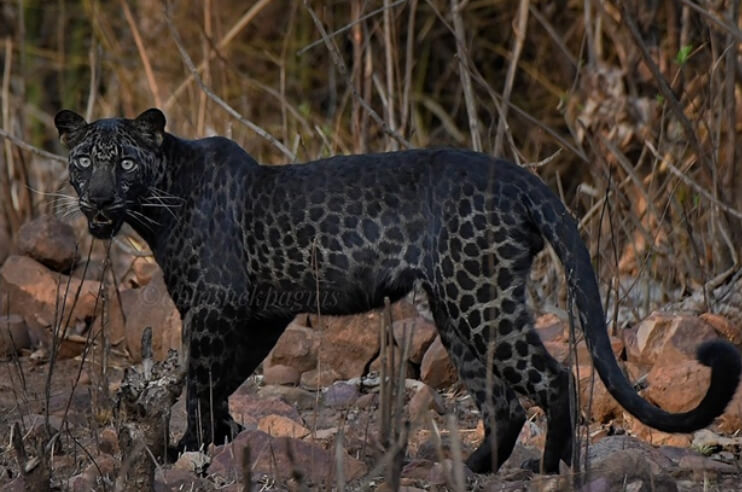
Here are some top 10 national park in india that have fascinating species flora and fauna.